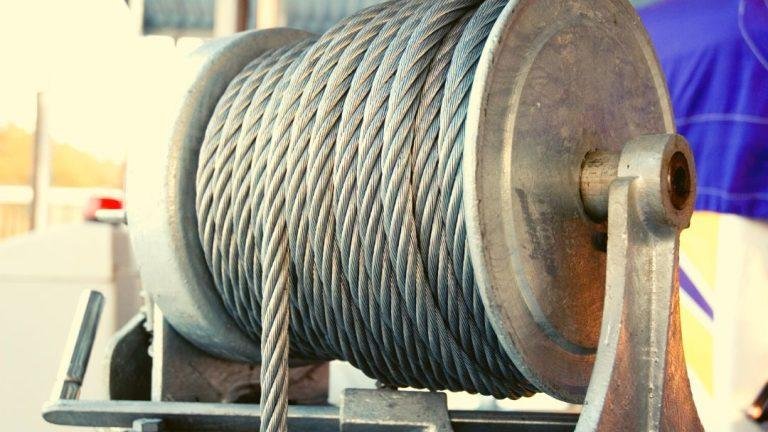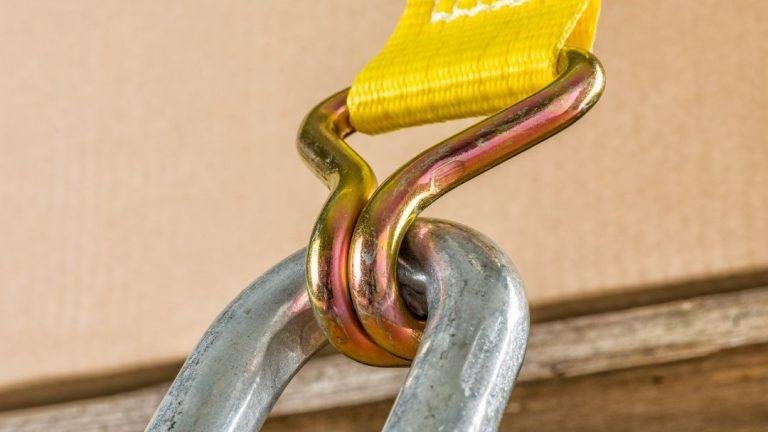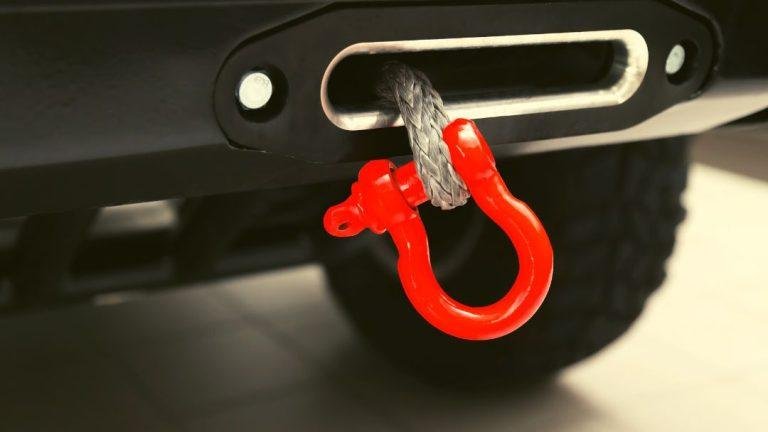To attach a recovery strap to a car, loop one end of the strap through the tow hook or recovery point on the car’s frame, then secure it tightly with a knot or appropriate fastener. This ensures a strong connection for towing or recovery operations.
Recovery straps are helpful in various situations such as getting a stuck vehicle out of mud or pulling a car onto a trailer. By following these simple steps, you can safely and effectively attach a recovery strap to your car, ensuring a successful towing or recovery experience.
Understanding The Recovery Strap And Its Uses
Learn how to attach a recovery strap to your car with these simple steps. Ensure a secure and effective connection for safe towing and recovery.
A recovery strap is an indispensable tool when it comes to safely recovering a vehicle. Whether you find yourself stuck in mud, sand, or snow, a recovery strap can help get you back on track. But what exactly is a recovery strap and how can it be attached to your car?
Let’s explore the different aspects of recovery straps and their uses.
What Is A Recovery Strap?
A recovery strap is specifically designed to assist in recovering a stuck or disabled vehicle. It is typically made from a strong and durable material such as nylon or polyester. The strap is designed to stretch, allowing it to store kinetic energy and provide a controlled and smooth recovery.
Here are a few key points to further understand the features of a recovery strap:
- Made of robust materials such as nylon or polyester
- Elasticity allows for stored energy during recovery
- Different sizes and load capacities available to suit various vehicles and situations
- Durable construction to withstand the forces of recovery effectively
Different Applications Of A Recovery Strap
Recovery straps offer versatile applications and can be utilized in various situations. They are commonly used for:
- Recovering a stuck vehicle from mud, sand, or snow
- Assisting in towing operations
- Pulling a vehicle from a ditch or over an obstacle
- Extracting a vehicle from a challenging off-road terrain
Importance Of Proper Attachment For Safety And Efficiency
To ensure both your safety and the efficient recovery of a vehicle, proper attachment of the recovery strap is crucial. Here’s why:
- Secure attachment minimizes the risk of the strap becoming detached during the recovery process
- Properly attached recovery straps distribute the forces evenly, reducing the chances of damage to the vehicles involved
- Incorrect attachment may lead to dangerous recoil or snapping of the recovery strap, causing potential harm to people or property
To achieve a safe and efficient attachment:
- Identify strong attachment points on the vehicles, such as tow hooks or recovery points
- Avoid attaching the recovery strap to weak or fragile components
- Make sure the strap is straight and free from twists or knots
- Take precautions to prevent the strap from coming into contact with any sharp edges or hot surfaces
By following these guidelines, you can ensure a safe and effective recovery operation while utilizing a recovery strap.
Remember, understanding the use of recovery straps and proper attachment can make a significant difference in overcoming challenging situations and getting back on the road. Stay prepared and drive with confidence, knowing you have the knowledge to attach a recovery strap when needed.

Choosing The Right Recovery Strap For Your Car
When attaching a recovery strap to your car, it is essential to choose the right one. Ensure it is strong and durable, with proper hooks to securely connect to your vehicle, providing a reliable solution in times of need.
Having a reliable recovery strap can be a game-changer when it comes to getting your car out of tough situations. But with so many options out there, how do you choose the right one for your car? In this section, we will explore the factors to consider when selecting a recovery strap, including matching the strap to your vehicle’s weight and towing capacity, as well as comparing different types of recovery straps.
Factors To Consider When Selecting A Recovery Strap:
- Vehicle weight and towing capacity: It is crucial to choose a recovery strap that matches your vehicle’s weight and towing capacity. Using a strap that is not rated for your car’s specifications can lead to dangerous situations. Consider the following points:
- Check your vehicle’s owner’s manual or consult with a professional to determine the weight and towing capacity.
- Look for recovery straps that are specifically designed and rated for your vehicle’s weight and towing capacity.
- Type of recovery strap: Recovery straps come in various materials, each with its pros and cons. Here are some common types:
- Nylon recovery straps: Nylon straps are known for their elasticity and strength. They can stretch and absorb shocks during recovery operations, preventing sudden jolts that could damage your car.
- Polyester recovery straps: Polyester straps are resistant to uv rays, moisture, and mildew, making them more durable in harsh conditions. They have less stretch compared to nylon but provide excellent strength.
- Chain recovery straps: Chain straps offer superior strength and are ideal for heavy-duty recovery operations. They are less flexible and may cause more abrupt movements during recovery.
- Attachments and hooks: Pay attention to the attachments and hooks on the recovery strap. They should be sturdy, well-constructed, and compatible with your vehicle and recovery equipment. Consider the following:
- Look for straps with reinforced loop ends for extra durability.
- Ensure that the hooks are appropriately sized and have a safety latch or lock mechanism to prevent accidental detachment.
- Storage and maintenance: Proper storage and regular maintenance are essential for the longevity of your recovery strap. Consider the following tips:
- Store your strap in a dry, cool place away from direct sunlight to avoid degradation.
- Check for signs of wear, fraying, or damage before each use.
- Clean the strap according to the manufacturer’s recommendations to prevent dirt and debris buildup.
Remember, investing in a high-quality recovery strap that is suitable for your vehicle and usage needs is crucial for safe and effective recoveries. Take the time to research and choose wisely to ensure you’re always prepared for unexpected off-road situations.
Steps To Attach A Recovery Strap To Your Car
Want to know how to attach a recovery strap to your car? Follow these step-by-step instructions for a safe and effective method. Get back on the road in no time!
Ensuring a safe location for attachment points:
- Before attaching a recovery strap to your car, it is crucial to find a safe location for the attachment points. This will ensure a secure and stable connection during the recovery process. Keep the following points in mind:
Step 1: locate the vehicle’s recovery points:
- Find the recovery points on your car. These points are specifically designed for attaching recovery straps. They are usually located at the front and rear of the vehicle. Refer to your car’s manual or consult a professional if you are unsure about their exact location.
Step 2: attach one end of the strap to the towing vehicle’s recovery point:
- Connect one end of the recovery strap to the towing vehicle’s recovery point. Make sure the connection is secure and tight. This will serve as the anchor point for pulling the stuck or disabled vehicle.
Step 3: attach the other end of the strap to the stuck or disabled vehicle’s recovery point:
- Connect the other end of the recovery strap to the recovery point of the stuck or disabled vehicle. Double-check the connection to ensure it is properly fastened and will not come loose during the recovery process.
Step 4: securing the strap properly to prevent slippage or detachment:
- Once both ends of the recovery strap are attached to the respective recovery points, ensure that it is properly secured. Take the necessary steps to prevent slippage or detachment during the recovery. Here are some precautions you should consider:
- Make sure the recovery strap is not twisted or tangled.
- Adjust the strap to eliminate any slack, but avoid overtightening.
- Use appropriate tools, such as shackles or d-rings, if needed, to enhance the connection’s safety and stability.
Step 5: communicating effectively with the driver of the stuck vehicle:
- Prioritize clear and effective communication with the driver of the stuck or disabled vehicle. This will help coordinate the recovery process smoothly and minimize any potential risks. Here are a few key communication tips:
- Discuss the recovery plan and signal the start and stop of the pulling process.
- Agree on clear signals to communicate any issues or emergencies during the recovery.
- Maintain constant communication throughout the entire procedure, ensuring both drivers are on the same page.
By following these steps, you can successfully attach a recovery strap to your car and handle recovery situations with confidence and safety. Remember, if you are unsure about any aspect of the process, consult a professional for guidance. Stay safe on the road!
Frequently Asked Questions Of How To Attach Recovery Strap To Car
How Do You Attach A Tow Strap To A Car?
Attach a tow strap to a car by following these steps. Begin by locating sturdy tow hooks on the car’s front or rear. If the car lacks tow hooks, consult the owner’s manual for alternative attachment points. Take the tow strap and loop it through the hook, ensuring a secure connection.
Verify that the strap is free from twists or knots that may weaken its strength. Move to the disabled vehicle and find a suitable attachment point, such as a tow hook or frame. Once again, loop the strap through the hook and secure it tightly.
Confirm that both connections are secure and tight. Remember to avoid attaching the strap to any unstable or fragile parts of the vehicle. With everything properly secured, proceed with caution when towing the car.
Does Recovery Strap Need Hooks?
Recovery straps do not necessarily need hooks. Recovery straps are primarily designed to provide a strong, elastic connection between two vehicles for towing or pulling purposes. They are usually made of nylon or polyester material that can stretch and absorb shock during recovery operations.
While some recovery straps come with hooks, they are not essential for the strap to function properly. Hooks can be helpful in certain situations, such as when attaching the strap to a secure anchor point. However, they can also pose a safety risk if not properly attached or if they become detached during the recovery process.
Therefore, it is important to ensure that hooks are securely fastened and in good condition if you choose to use them with a recovery strap.
How Do You Attach A Recovery Strap To A Shackle?
To attach a recovery strap to a shackle, follow these simple steps: 1. Wrap the recovery strap tightly around the object you want to tow. 2. Slide one end of the strap through the shackle’s opening. 3. Make sure the strap fits securely around the shackle.
4. Pull the strap tight to ensure a firm connection. 5. Double-check that the shackle’s pin is properly secured in place. Remember, when attaching a recovery strap to a shackle, it’s essential to ensure a tight and secure connection. This will minimize the risk of the strap becoming loose during towing and avoid potential accidents.
Always follow the manufacturer’s instructions for both the recovery strap and shackle to ensure safe and effective usage.
Where Do You Put A Tow Strap Without Hooks?
To use a tow strap without hooks, wrap it around a strong structural component of the vehicle. Possible attachment points include the frame, tow hooks, or bumper brackets. Ensure the strap is securely fastened and does not interfere with any moving parts.
Avoid attaching the strap to plastic components, as they may break under stress. Always follow the manufacturer’s instructions and guidelines when using a tow strap.
Conclusion
So there you have it! Attaching a recovery strap to your car is not as complicated as it may seem. By following the steps outlined in this blog post, you can ensure that you are doing it correctly and safely.
Remember to choose a strong and reliable recovery strap, know where to attach it to your vehicle, and use appropriate connections. Always prioritize safety and have the necessary tools on hand. Whether you find yourself in a sticky situation off-road or need to remove a stuck vehicle from a tough spot, having the knowledge to properly attach a recovery strap can be invaluable.
So go ahead, make sure you’re well-prepared, and confidently handle any challenging situation that may arise. Stay safe out there!






